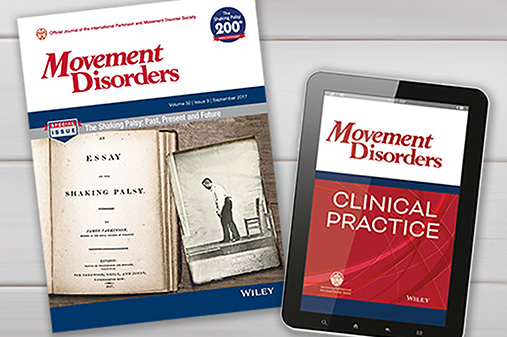 VOLUME 28, ISSUE 4 • DECEMBER 2024. Full issue »
VOLUME 28, ISSUE 4 • DECEMBER 2024. Full issue »

Towards combined application of alpha-synuclein and 4-repeat tau seed amplification assays for the differential diagnosis of parkinsonian disorders

Much has been discussed regarding the emergence of alpha-synuclein (a-syn) seed amplification assays (SAA) in research and clinical settings. Whilst there is little doubt in its ability to detect pathological a-syn seeding, questions remain as to whether these assays are ready for prime-time in the clinic as a diagnostic test and trial stratification tool as part of the proposed biological definition and staging system for Parkinson’s disease (PD) (1). Such questions include the clinical relevance of assay positivity in: |
|
1. Neurologically normal and prodromal individuals – are such individuals destined to manifest clinically with parkinsonism, or does this merely represent asymptomatic incidental Lewy body pathology? 2. Other neurodegenerative disorders – does this signify misdiagnosis, or is this a marker of Lewy body co-pathology? |
Building on our recent study of a-syn SAA positivity rates in the Parkinson-plus disorders (2), we separately detected a-syn SAA positivity in CSF samples from 8/52 (15.4%) progressive supranuclear palsy (PSP) and 63/66 (95.5%) PD clinically diagnosed participants. Positivity in PSP samples usually had associated ‘low and slow’ kinetics, which was also seen in a subset (8/63, 12.7%) of positive PD samples. We hypothesise that a-syn SAA positivity in PSP represents the presence of Lewy body co-pathology, which has been confirmed in a subset of our PSP participants who went on to have post-mortem confirmation of primary PSP 4-repeat tau (4RT) pathology with low Braak stage Lewy body co-pathology.
PD and PSP, along with the other Parkinson-plus disorders, are one of the main differential diagnoses considered in patients presenting clinically with parkinsonism. The clinical differentiation of these disorders is challenging in the early stages of symptomatic disease when red-flag features such as eye movement abnormalities may be subtle or even absent, especially in the non-classical forms of PSP such as PSP-parkinsonism. As such, our results highlight that it is insufficient to rely on a-syn SAA positivity in isolation to support a clinical diagnosis of PD. Similarly, we hypothesise that at least a subset of a-syn SAA negative (and potentially a-syn SAA positive with ‘low and slow’ kinetics) PD patients will in fact have primary 4RT pathology. This is especially relevant in LRRK2-PD where up to a third of patients are a-syn SAA negative (3), with previous post-mortem studies of LRRK2-PD highlighting a relative absence of Lewy body pathology.
We therefore collaborated with researchers at the NIH Rocky Mountain Laboratories to develop a 4RT SAA, which uses a modified reaction mixture that results in greater reproducibility for detecting PSP pathology in brain tissue samples compared with a previous version of the assay (4). Our 4RT assay was positive in 6 out of 6 frontal cortex brain tissue samples from pathologically diagnosed PSP patients. Furthermore, it was positive in 1 out of 6 equivalent samples from neurologically normal controls who had donated their brains post-mortem. A subsequent review of the positive control brain sample revealed the presence of low-level incidental 4RT pathology.
We are currently optimising this assay for use in ante-mortem CSF with a future view to apply the a-syn and 4RT SAAs in combination to CSF samples from patients with early, clinically indeterminate parkinsonism who will be followed up longitudinally with post-mortem validation. This approach will enable us to comprehensively assess whether SAA panels can be used as an early and accurate diagnostic biomarker alongside ongoing efforts to develop these assays for use in more accessible biosamples, including blood and skin.
![]() Listen to the podcast interview »
Listen to the podcast interview »
References
- Simuni E, et al. A biological definition of neuronal a-synuclein disease: towards an integrated staging system for research. Lancet Neurology 2024; 23: 178-190.
- Vaughan DP, et al. Evaluation of cerebrospinal fluid a-synuclein seed amplification assay in progressive supranuclear palsy and corticobasal syndrome. Movement Disorders 2024: online ahead of print.
- Siderowf A, et al. Assessment of heterogeneity among participants in the Parkinson’s Progression Markers Initiative cohort using a-synuclein seed amplification: a cross-sectional study. Lancet Neurology 2023; 22: 407-417.
- Saijo E, et al. 4-repeat tau seeds and templating subtypes as brain and CSF biomarkers of frontotemporal lobar degeneration. Acta Neuropathologica 2020; 139: 63-77.
Read more Moving Along:






